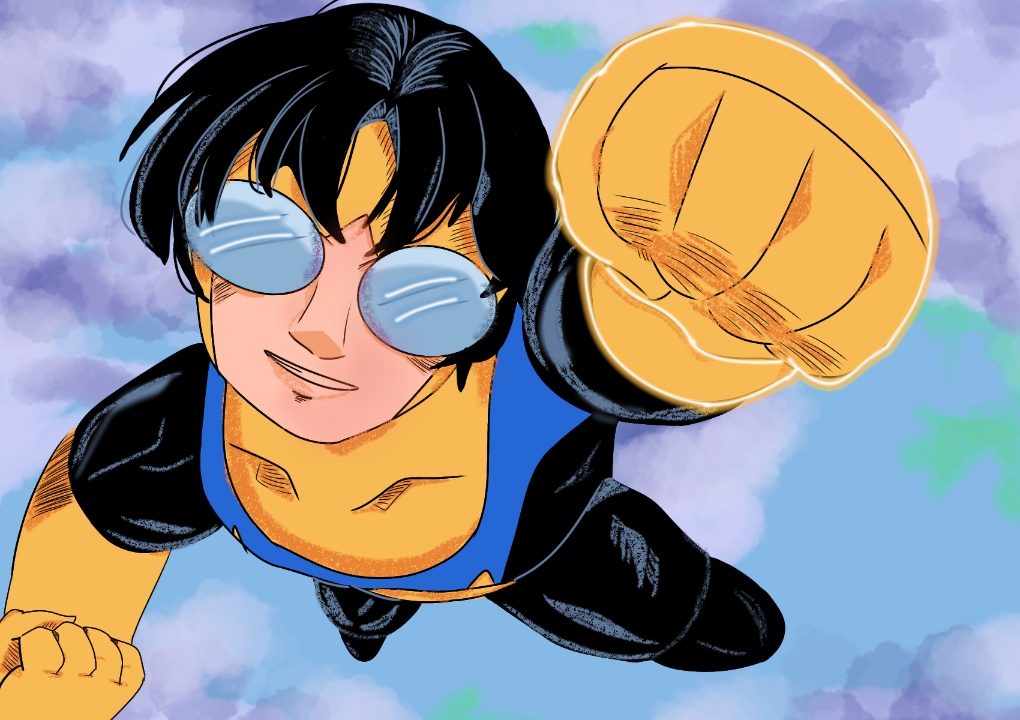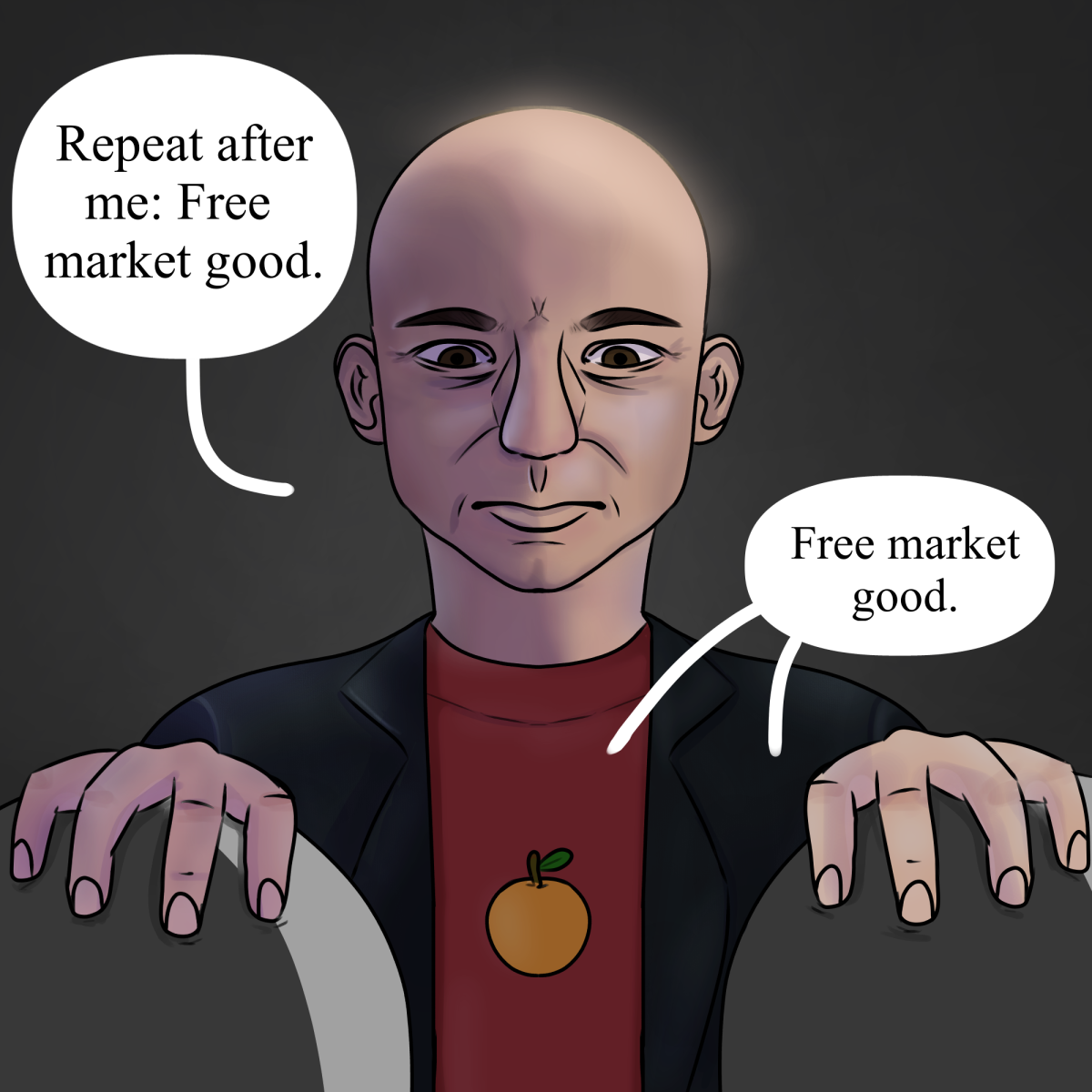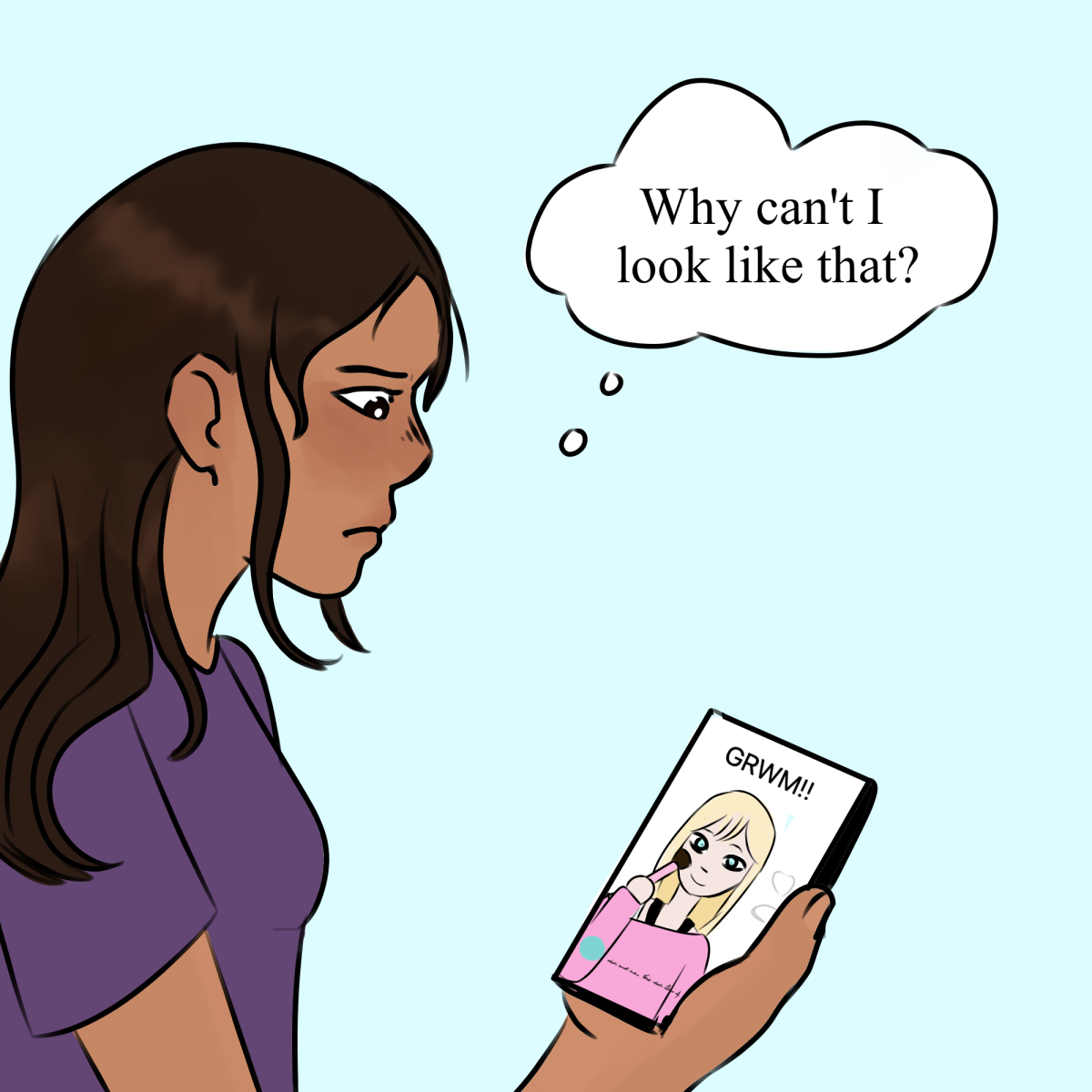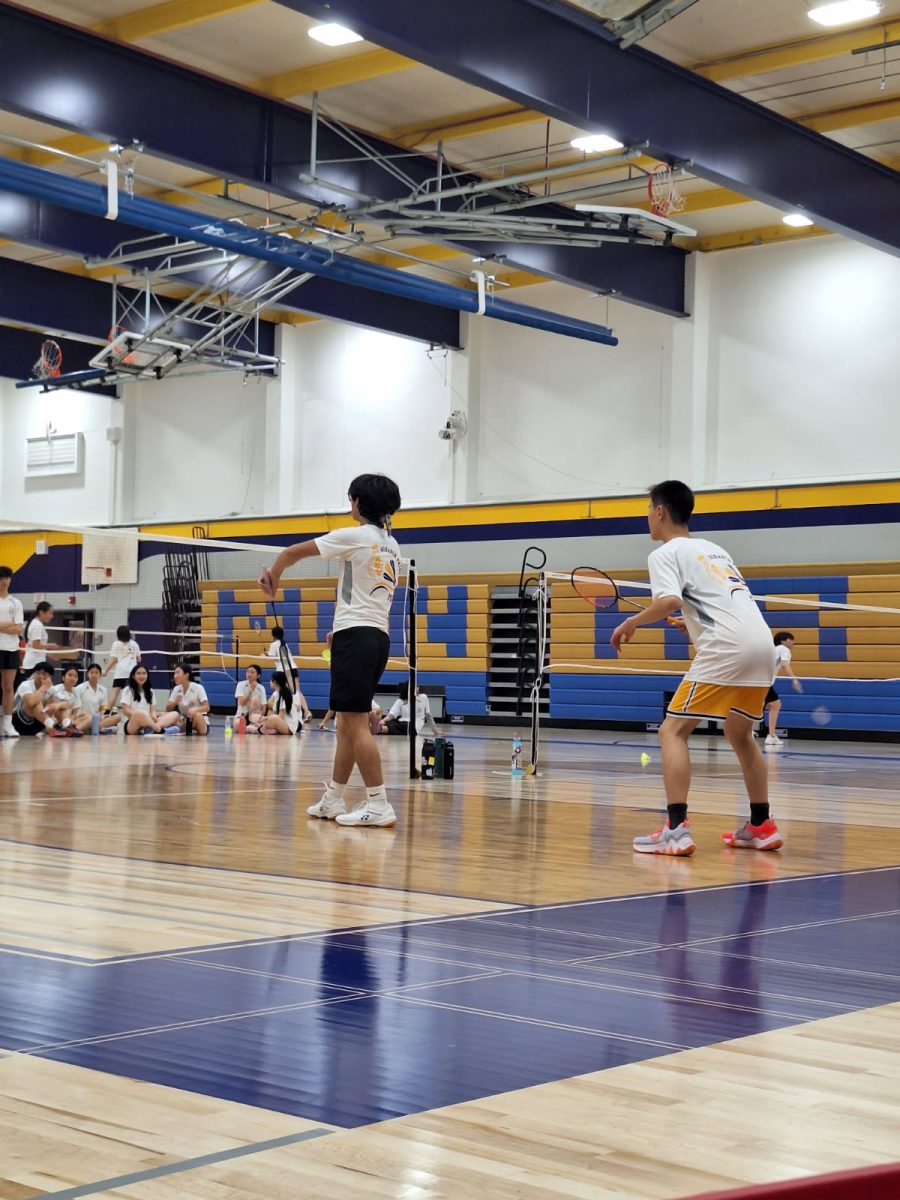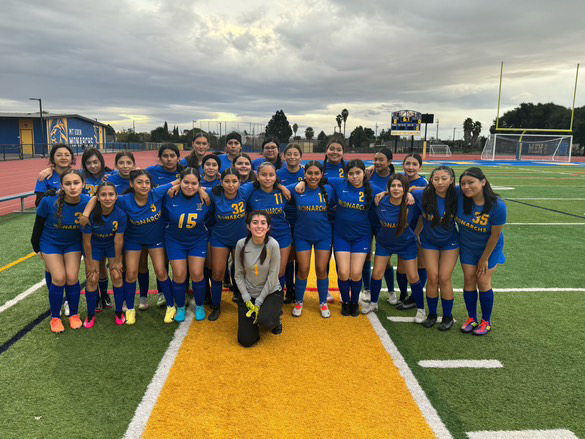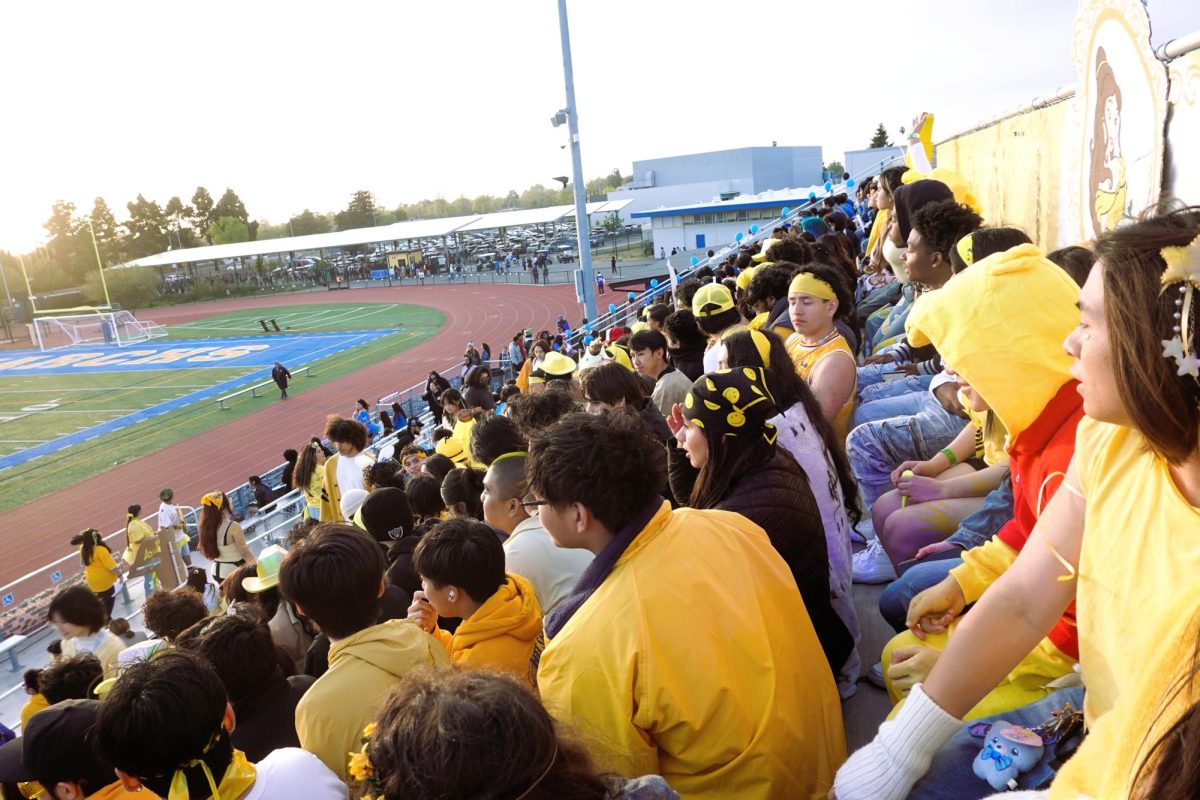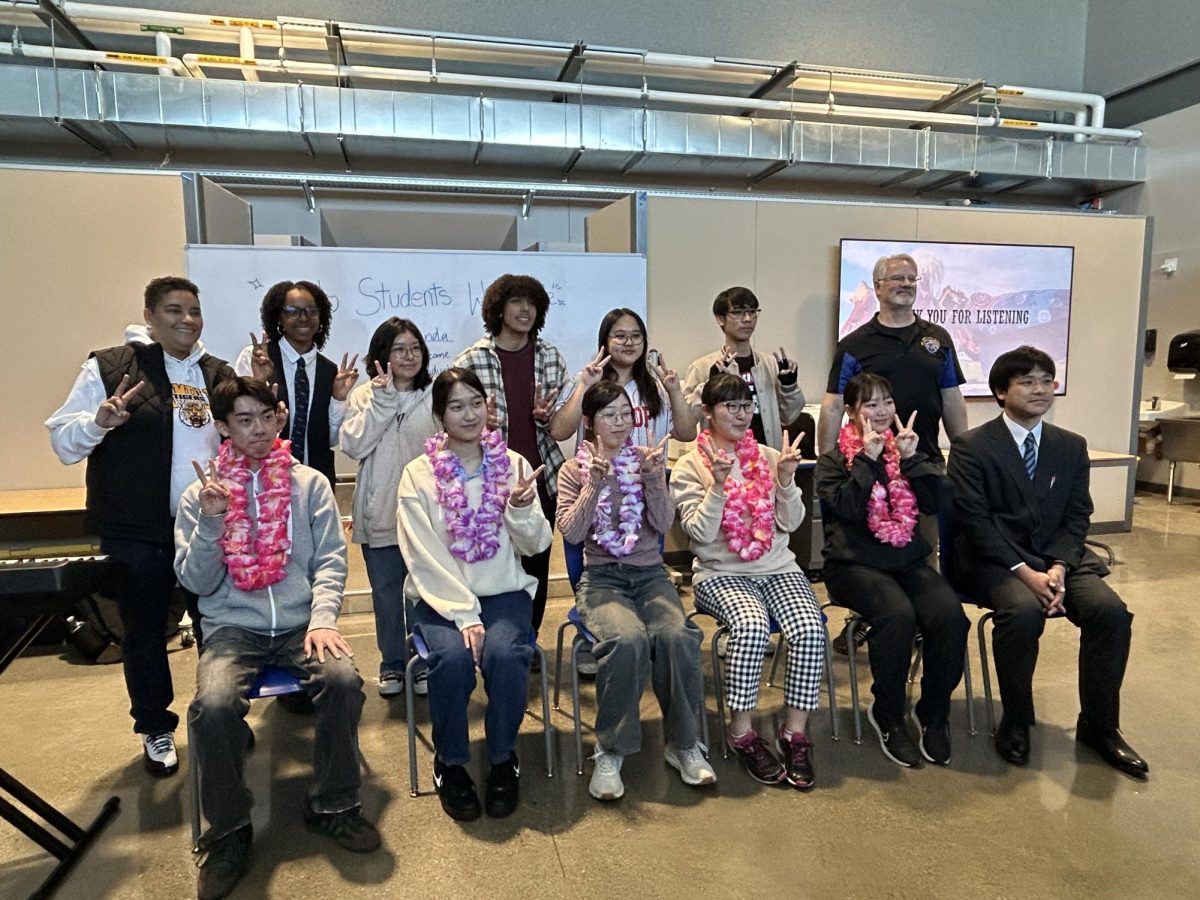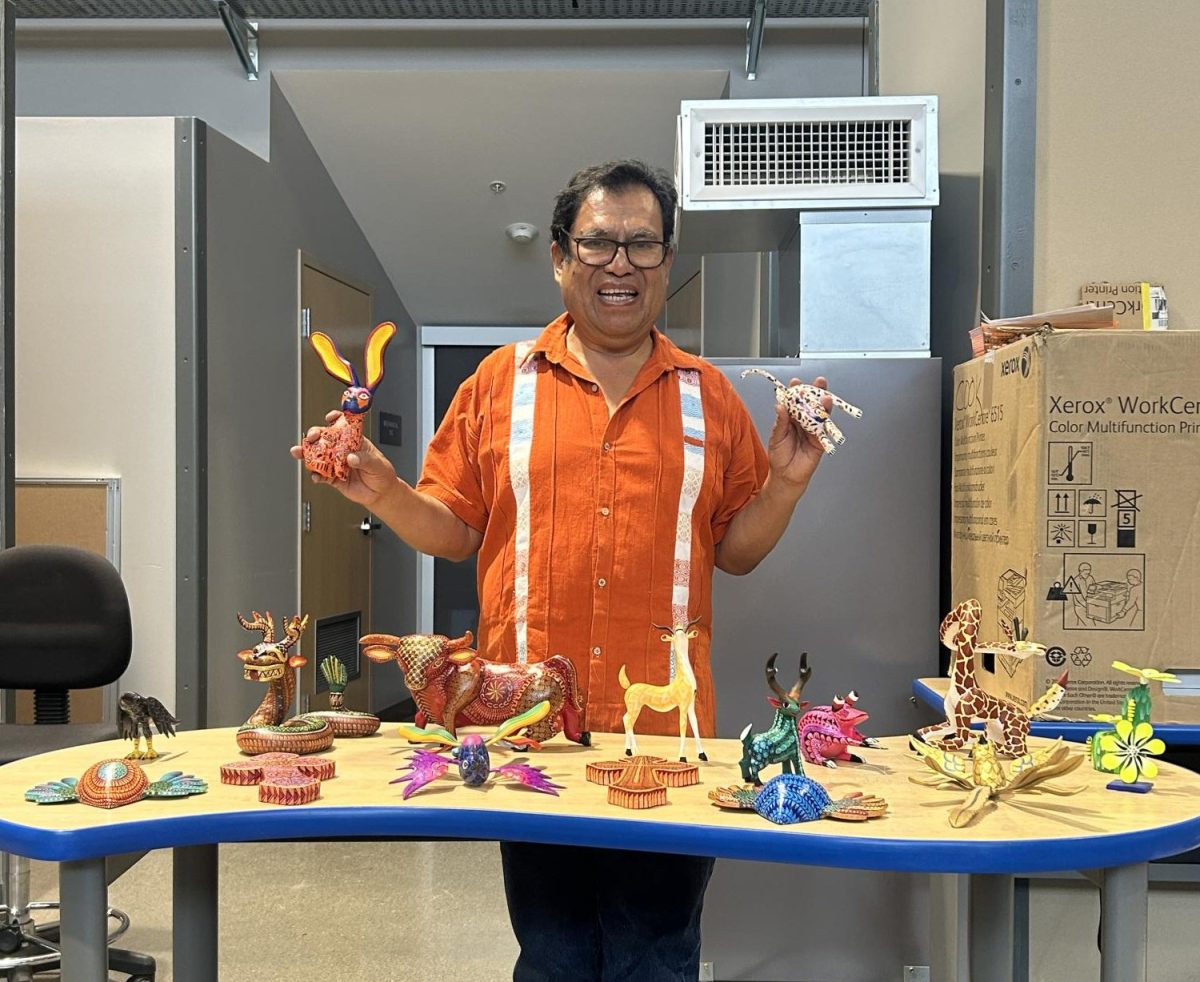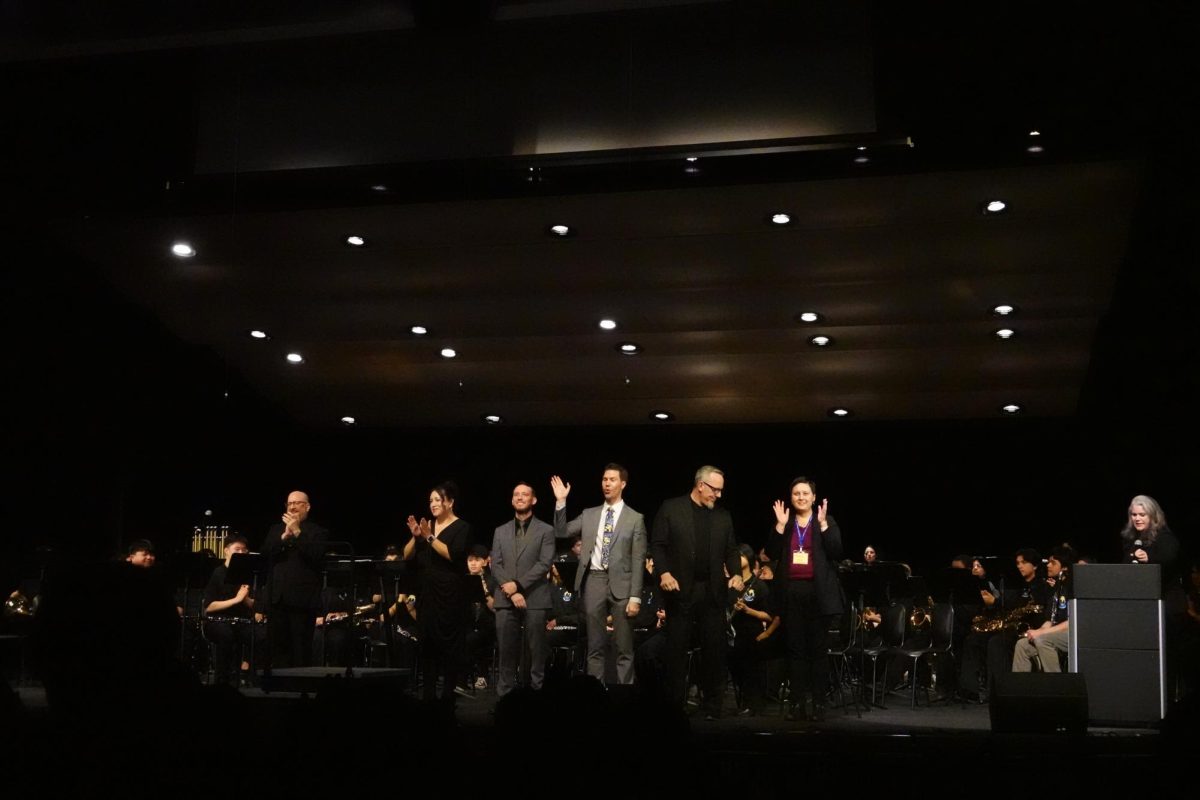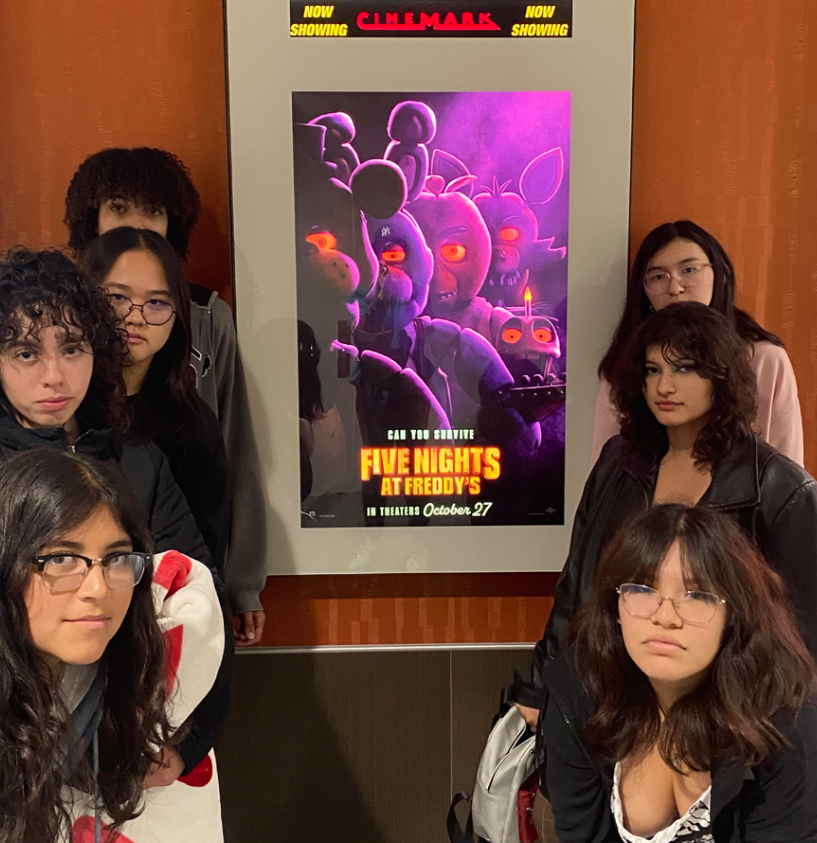Imagine you’re wandering through the abandoned backrooms of an old arcade, dimly lit by flickering lights, and it’s too quiet. An illusive child is running through the halls echoing your name, and you reluctantly follow, wanting answers. You are led to a room littered with machine parts, torn cloth, and exposed wires. Center stage is a 6-foot tall machine that looks somewhat like a bear with a tiny top hat. You’re not sure what it is, but the machine is calling you, luring you closer to its face. You’re eye-to-eye with its eerily empty, robotic gaze. The uncomfortable silence is shortly filled with your screams as you’re pulled into this machine and bitten in half at the waist, meeting your untimely demise.
Depending on the viewer, some may find this scene haunting, while others may find it unintentionally silly and symptomatic of Five Nights at Freddy’s (FNAF’s) inconsistent tone. As the movie displayed the awkward flailing silhouette of the victim’s body, the movie evoked laughter instead of fear among some audience members. Among the editorial board, fans of the FNAF game series praised the film for following FNAF’s expansive lore and appealing to childhood nostalgia. However, those without any emotional attachment to FNAF found the movie illogical, poorly paced, and rife with bad writing. “It’s the corniest thing I’ve ever watched,” comments Elisandra Hampton, a senior at Mt. Eden.
The movie follows Mike Schmidt, who is traumatized after the kidnapping of his brother and tasked with caring for his younger sister, Abby. Faced with limited career opportunities, he accepts a job as a security guard at Freddy Fazbear’s Pizzeria, an abandoned restaurant. However, the job is more than he bargained for, and he has to cope with killer animatronics and increasingly vivid nightmares about his missing brother. A minority of the editorial board believes the movie’s violence wasn’t graphic enough, producing boredom among viewers. By contrast, most of the editorial board views the level of violence as consistent with the game series and perfectly fit for its targeted young audience.
While the point of the FNAF games is to frighten players with its iconic jumpscares, the movie did not meet expectations. Although the characters in the movie are terrified of the animatronics, players of the game already know what is coming. The opening scene consists of an anxiety-arousing chase between a guard and an animatronic. At first, viewers hang in suspense as they watch the guard try to escape. As the guard fails to open the exit, he hears humming. Instantly, fan viewers’ anxiety diminishes as they recognize Foxy’s iconic melody. The dramatic irony makes the jumpscares fail for viewers who already expect the pounce, but succeed for viewers unaware of the outcome. Since the movie already doesn’t have many jumpscares, people may be disappointed.
In contrast to the sloppy dramatic irony, the filmmakers cleverly foreshadowed numerous events, leaving unfamiliar viewers with plenty of a-ha moments upon finishing the film. For example, Mike interrupts Abby while she’s drawing a fox and a chicken on her paper. As some fans may recognize, the characters reference Foxy and Chica, two animatronics that Mike and Abby would later encounter. However, fans thought the foreshadowing made the story predictable, causing the big reveals to be anticlimactic.
Moreover, there are many easter eggs in the movie. A restaurant on set named Sparky’s references Sparky the Dog from FNAF 1. Also, Shadow Freddy from FNAF 3 makes an appearance. The book Mike reads, “The Dream Theory,” refers to a theory YouTuber Matpat had about FNAF games. The theory claimed the entire FNAF franchise is a dream.
The film ended with the major theme that friendship wins. The ending was reminiscent of a Disney film: main characters and the ‘misunderstood’ banding together to defeat the villain. The Editorial Board, including the fans of FNAF, saw this as a boring, unfulfilling closing to the film. Fans can only hope that the next two sequels, teased by Blumhouse Productions, will live up to expectations.
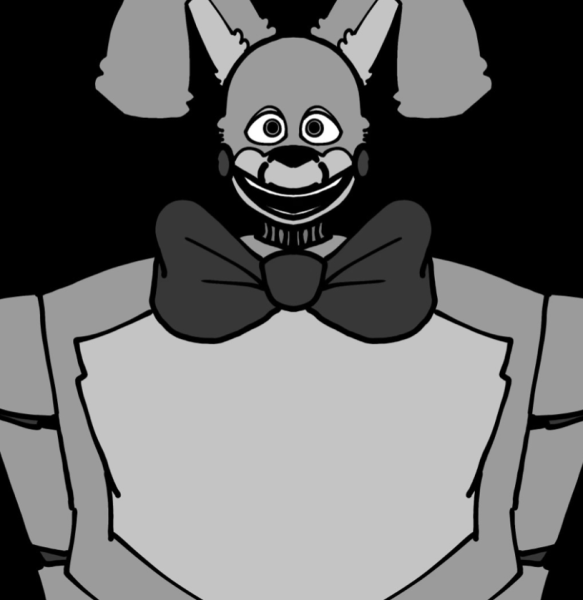
Fans of FNAF: 3.5/5 stars
Non-fans of FNAF: 2/5 stars





